Head-To-Head: Samsung Galaxy Note 8 Vs. Apple iPad Mini
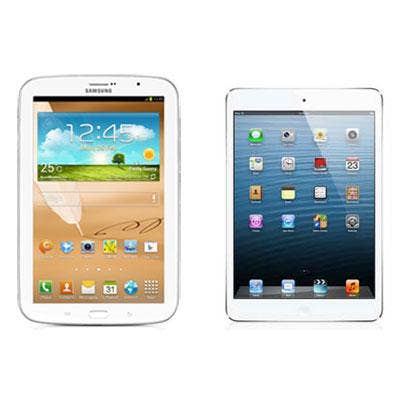
Tablet Mini-War
With the release last month of the Galaxy Note 8, Samsung once again looks to take a bite out of Apple's tablet market share. When we compared Apple's iPad Mini vs. the Galaxy Note 10.1 last winter, Samsung had not yet invented the 8-inch version. Samsung's smaller Note is just as capable as the larger, and has features unique among tablets to date.
It has also come to light that iPad demand has been waning in recent weeks, and that hunger for iPad mini is on the rise. While Apple doesn't break out sales figures for its iPad models, one media report puts iPad mini sales at 12.5 million of the 19.5 million total iPads sold in Apple's second 2013 quarter. Clearly there's a big demand for little tablets. Here's how the $399 Galaxy Note 8 compares with Apple's $329 iPad mini.
{C}
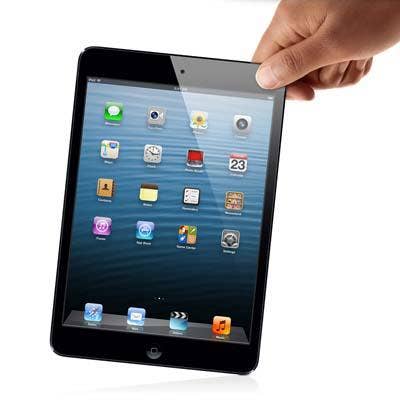
Construction, Dimensions
With its shiny metallic frame, the Galaxy Note 8 has a handsome look. But if a metal case is a must-have, then Apple and its aluminum unibody wins over Samsung's all-plastic shell. Both feel comfortable to hold with one or two hands, and both are equally vulnerable to damage if dropped. Except for length, physical dimensions of the Galaxy Note 8 and iPad mini are essentially identical. Both are 5.3 inches wide and less than a third of an inch thick. The Galaxy Note 8 is 8.3 inches long to iPad mini's 7.9 inches. Apple's little tablet tips the scales just shy of 11 ounces (10.88 ounces) while Note 8 weighs in around 12 ounces with 3G/LTE or Wi-Fi.
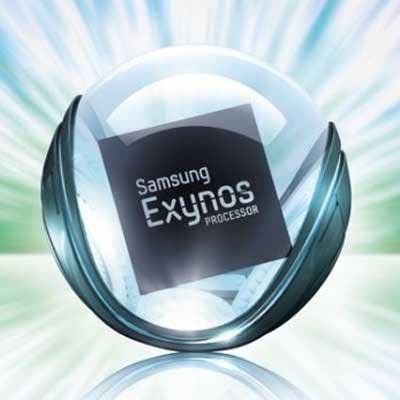
CPU, GPU And Memory
Galaxy Note 8 contains a far more powerful processor than iPad mini. Like the 10.1-inch Galaxy Note, the Galaxy Note 8 is built around Samsung's Exynos 4412 quad-core system-on-chip with 2 GB of system RAM. Along with its four ARM Cortex A9 application processor cores, the 4412 SoC incorporates four ARM Mali 400 graphics processors. The smaller unit has a 1.6GHz clock rate; the 10.1 runs at 1.4GHz. The iPad mini uses Apple's A5 custom SoC with two ARM Cortex-A9 cores running at 1.0GHz, plus a NEON SIMD instruction accelerator and two PowerVR GPU cores. This is the same SoC as Apple's iPad 2, and the same paltry 512MB of system memory.
Apple offers more storage memory flavors than Samsung, with 16-, 32- and 64-GB editions compared with Galaxy's 16- and 32-GB editions. However, Samsung's device allows expansion. Its microSD card slot can add as much as 64 GB of additional storage and can be used for moving files and consuming media.
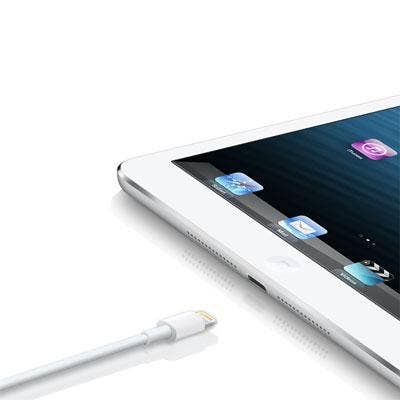
Physical Interfaces
Galaxy Note 8 eschews Samsung's proprietary 30-pin connector of its other tablets for the now-more-commonplace USB Micro-B plug. While this does add versatility over a Samsung-only connector, we're not convinced that the Micro-B connector is sturdy enough for a device of this size. Apple's all-digital Lightning port is far more durable and is also reversible, further helping to reduce damage from cable orientation mistakes. The Micro-B won't plug in backwards, but it can be damaged if forced and is easily bent.
Physical interfaces common to both devices are a headphone jack, edge-mounted power and volume buttons and a single home key. What's also nice about the Galaxy Note 8 is that the stylus (covered next) also can be used to press the device's off-screen buttons. This is a new and extremely welcome feature enhancement to stylus use that you just won't appreciate until you've used one.
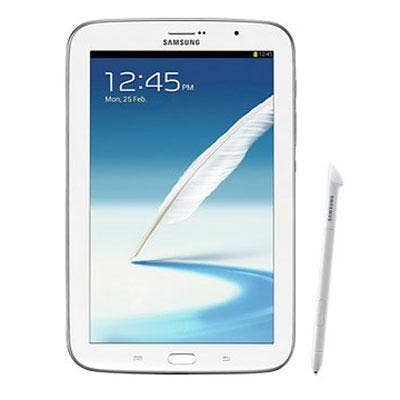
Ins And Outs
It's hard to overstate the convenience of a stylus. Once the central control point for some of the world's most popular PDAs, the stylus had all but been erased until Samsung resurrected it for the Galaxy Note 10.1. The pen is far mightier than the finger for note taking, graphical content creation with high precision, and efficient navigation. When sliding the stylus from its flush mount, the Galaxy Note 8 senses its movement and presents a palette of pen-optimized content creation apps with handwriting recognition and palm rejection technologies. Sheathing the pen restores the home screen. Nice touches.
Adding exponentially to the versatility of Galaxy Note 8 is the infrared emitter, which turns the device into a remote control for televisions, cable set-top boxes, audio/video and other electronic components. Companion software works with cable and satellite systems to tailor content selections and supplement the television viewing experience.
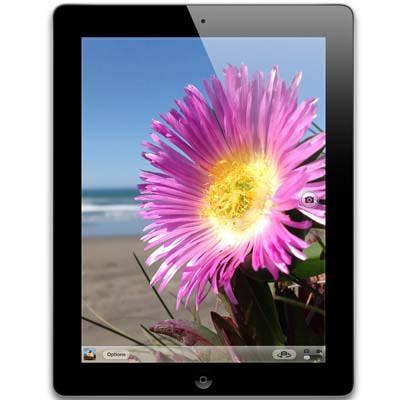
Display
Samsung's display is a little larger and more pixel-dense than Apple's, but probably not enough to make a difference to most eyes. As the name suggests, the Galaxy Note 8 is built around an 8-inch LED with a maximum resolution of 1,280 x 800. For Retinologists, that's a density of 189 pixels-per-inch. The iPad mini's 7.9-inch LED maxes out at 1,024 x 768, which calculates to 163ppi. Apple's display employs IPS technology, which is known for its enormous range of colors and super-wide viewing angle. Samsung's panel uses the company's PLS technology, which Samsung claims can display 100 percent of colors in the sRGB color-space specification and offer viewing angles on par with IPS. It's also about 10 percent brighter than comparable panels, offers better image quality and costs less to manufacture than IPS, according to Samsung.
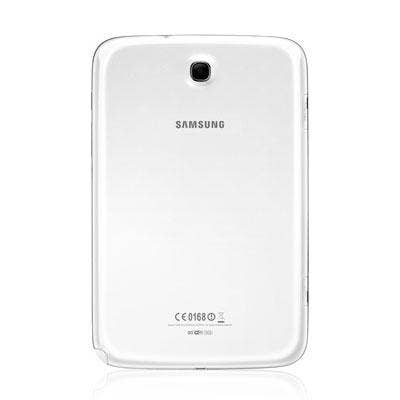
Cams And Comms
The cameras on the Galaxy Note 8 and iPad mini are virtually identical. Both come with 5MP auto-focus cameras in the rear, and neither has a flash. Note 8 has a 1.3MP sensor in front to the mini's 1.2MP sensor. Apple's rear camera contains a 2.4f aperture and five element auto-focus lens, with image stabilization and backside illumination. The front cameras of both capture 720p video and can geotag photos and videos. Samsung didn't publish specs on its rear-camera lens, but it does include tons of cool software designed to enhance photos. Both the iPad mini and Galaxy Note 8 can capture 1080p 30fps video and come with dual-band Wi-Fi a/b/g/n, Bluetooth 4.0 and GPS.
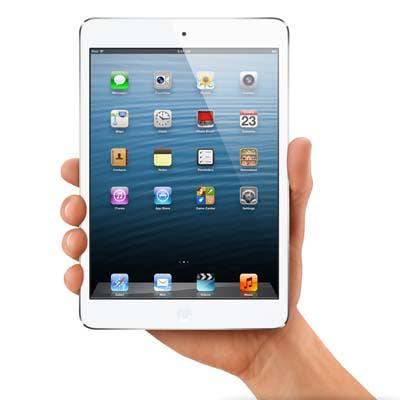
Carriers And Pricing
The iPad mini is available with Wi-Fi only at its base price of $329, as well as with choice of radios for AT&T, Sprint or Verizon for $459 with 16 GB. The Galaxy Note 8 will be widely available in June with Wi-Fi only in the U.S. Pricing starts at $399 with 16 GB. The Samsung device runs Android 4.12 Jelly Bean, can display two running applications on the screen at once and includes the latest version of Samsung's feature-rich TouchWiz interface overlay. The iPad mini runs iOS 6 plus hundreds of thousands of apps.
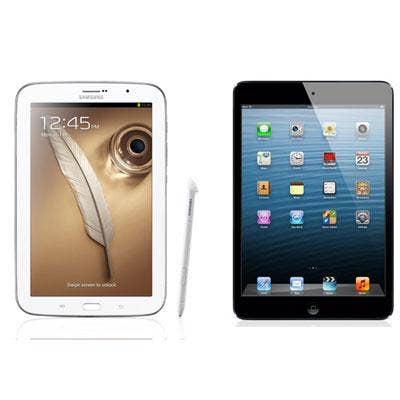
The Bottom Line
Advantages of the Galaxy Note 8 over the iPad mini include a faster, more powerful processor for applications and graphics, a higher-resolution screen, pen-based input, multitasking, memory expandability and access to the file system. It's also running an open source operating system that can be modified if need be. The iPad mini is significantly less expensive, can operate on cellular networks, offers access to a vast ecosystem of applications and developers, is housed in an aluminum case and provides a sturdy, multifunction connector. Features that are roughly equivalent between the two devices include size, shape and weight, as well as cameras and other sensors.